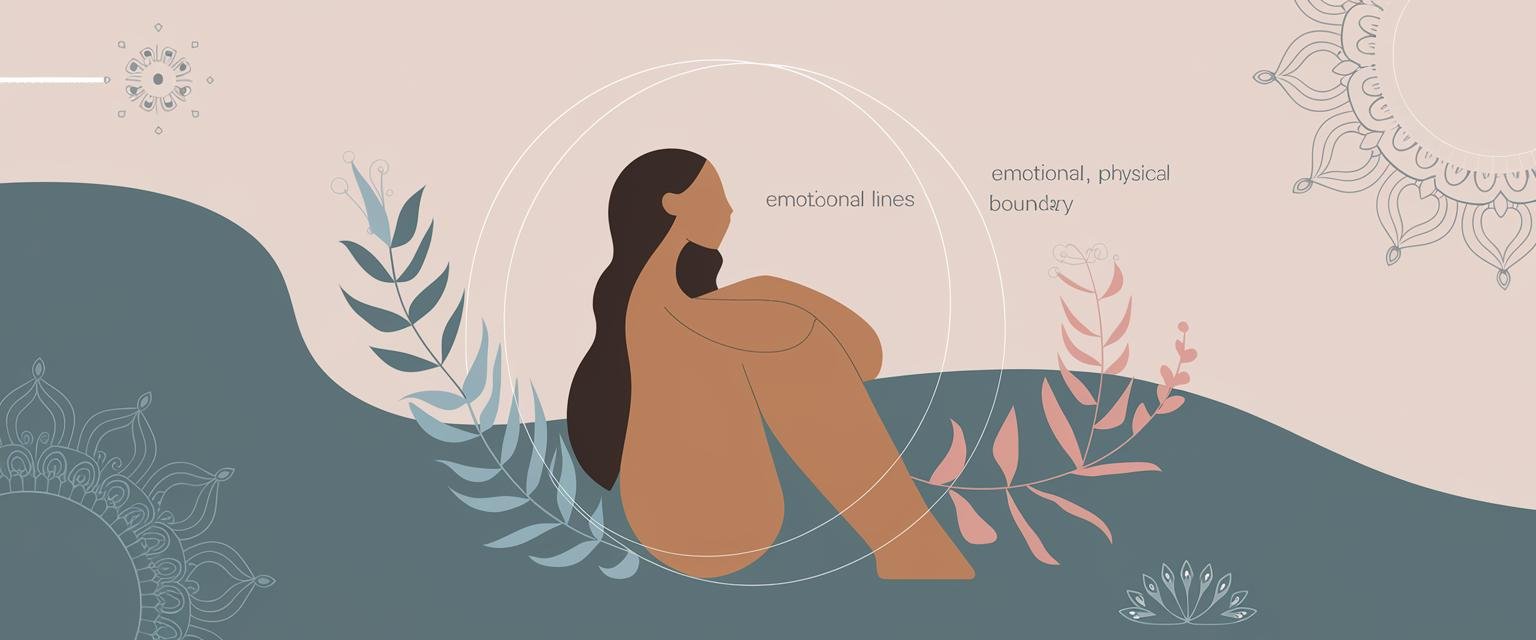Setting Healthy Boundaries: An Empowering Toolkit
Introduction
Have you ever felt drained after spending time with certain people? Or perhaps you’ve found yourself saying “yes” to requests when you really wanted to say “no”? Many women struggle with setting and maintaining healthy boundaries, especially in cultures where putting others’ needs first is deeply ingrained. Yet boundaries aren’t selfish—they’re essential for our well-being. This toolkit offers practical guidance for creating healthy limits that protect your energy while nurturing meaningful connections.
Table of Contents
- Understanding Different Types of Boundaries
- Creating Boundaries with Family, Friends, and Colleagues
- Recognizing and Addressing Crossed Boundaries
- Quick Wellness Questions
- Finding Your Path Forward
Understanding Different Types of Boundaries
Emotional Boundaries
Emotional boundaries protect your right to have your own feelings and thoughts without judgment. They create space between you and others’ emotions, allowing you to separate what belongs to you from what doesn’t. When someone pressures you to feel a certain way or dismisses your emotions with phrases like “you’re too sensitive,” your emotional boundaries are being challenged.
Physical Boundaries
Physical boundaries involve your personal space, privacy, and body. In many South Asian contexts, physical boundaries can be particularly challenging as extended family structures often blur the lines of personal space. Setting clear limits about touch, personal space, and privacy is not disrespectful—it’s essential self-care.
Digital Boundaries
In our always-connected world, digital boundaries have become crucial for mental wellness. This includes managing your availability on messaging apps, social media presence, and work communications. The expectation of constant availability can quickly deplete your energy reserves.
Creating Boundaries with Family, Friends, and Colleagues
Family Boundaries
Family boundaries can be the most challenging to establish, especially in cultures where family interdependence is highly valued. Start with small, clear statements about your needs. For example, instead of always being available for family calls, you might say: “I can talk on Tuesday evenings, but I need other evenings for rest.”
How to Say No Politely
Saying no doesn’t require elaborate explanations or apologies. Simple, clear language works best: “Thank you for thinking of me, but I can’t take this on right now.” Or “I appreciate the invitation, but I need to decline.” Remember that “No” is a complete sentence, though cultural context might require a bit more cushioning.
Workplace Boundaries
Professional boundaries protect your time, energy, and work-life balance. This might look like not checking emails after work hours, declining additional projects when you’re at capacity, or requesting clear expectations for your role. Document important boundaries in writing when possible, especially in professional settings.
Recognizing and Addressing Crossed Boundaries
Signs Your Boundaries Are Being Crossed
Your body often signals boundary violations before your mind fully registers them. Pay attention to physical cues like tension, fatigue, or stomach discomfort when interacting with certain people. Emotional signs include feeling resentful, anxious, or drained after specific interactions. These sensations are your internal alarm system at work.
Protecting Your Energy
When boundaries are crossed, respond promptly and clearly. Restate your boundary without apology: “I mentioned I’m not comfortable discussing this topic. Let’s talk about something else.” If the pattern continues, you may need to limit time with certain people or create more formal boundaries to protect your emotional well-being.
Growing Through Discomfort
Setting boundaries often feels uncomfortable at first, especially if you’ve been conditioned to prioritize others’ comfort over your own. Start with smaller boundaries and build your confidence gradually. The initial discomfort is temporary, but the benefits to your well-being are lasting.
Quick Wellness Questions
Q: Why are healthy boundaries important?
A: Boundaries protect your mental and emotional resources, preventing burnout and resentment. They define where you end and others begin, creating the foundation for authentic relationships based on mutual respect rather than obligation or fear.
Q: How can I set boundaries with family without seeming disrespectful?
A: Frame boundaries as needs rather than complaints. Use “I” statements like “I need some quiet time to recharge” instead of “You’re always demanding my attention.” Express appreciation for their intention while still holding your boundary: “I know you want to help, but I need to handle this my way.”
Q: What are signs my boundaries are being crossed?
A: Physical signs include tension, fatigue, or physical discomfort. Emotional signs include feeling anxious, resentful, or drained after interactions. Behavioral signs include avoiding certain people or situations, overextending yourself, or feeling like you need to justify your choices.
Q: How do I handle boundary-crossing without damaging relationships?
A: Address violations calmly and directly when possible. Focus on the specific behavior rather than attacking the person’s character. For persistent issues, consider having these conversations in neutral settings and use phrases like “When [specific behavior happens], I feel [emotion]. In the future, I need [specific request].”
Finding Your Path Forward
Setting healthy boundaries is a practice, not a one-time event. Start small, be consistent, and remember that your needs matter. As you strengthen your boundary-setting muscles, you’ll likely notice improved relationships, increased energy, and a stronger sense of self. The most powerful gift of boundaries isn’t just protecting yourself from what drains you—it’s creating space for what truly nourishes you.
Take one small step today: identify one situation where you need a clearer boundary, and practice articulating what you need. Your well-being is worth protecting.
Subscribe to our newsletter for weekly wellness tips and mindful practices from Hey Mandala.

